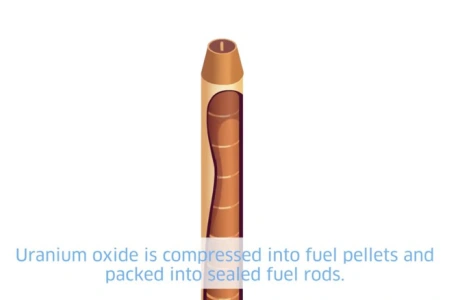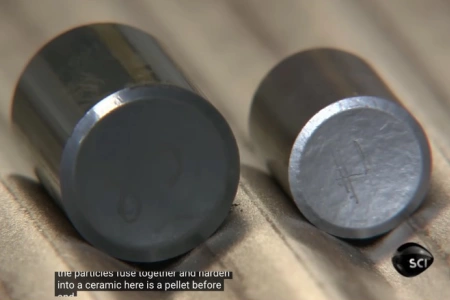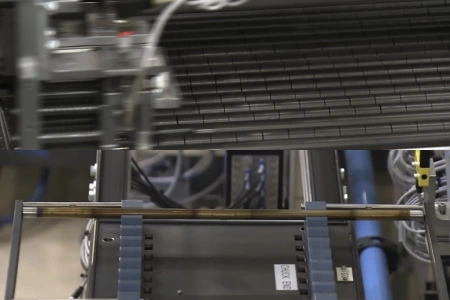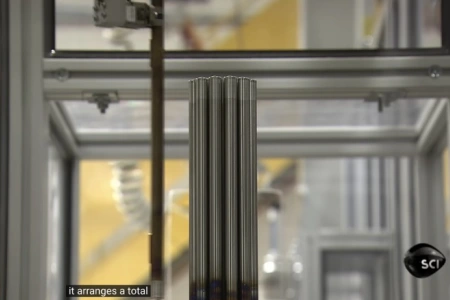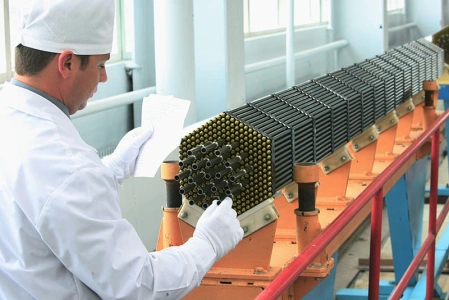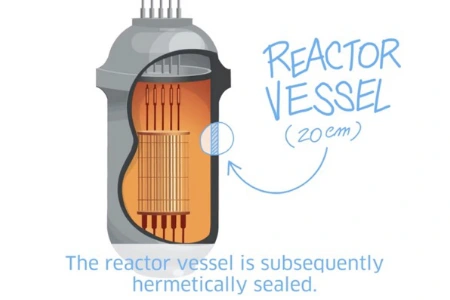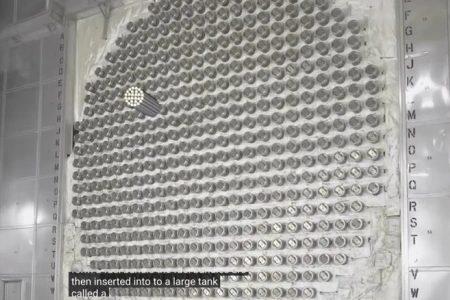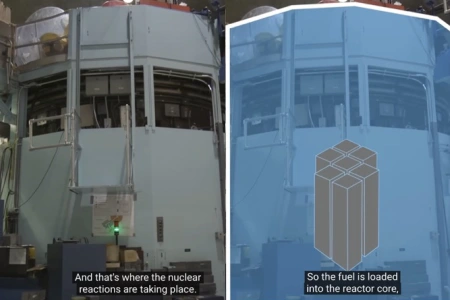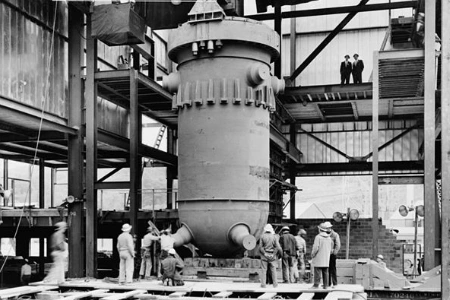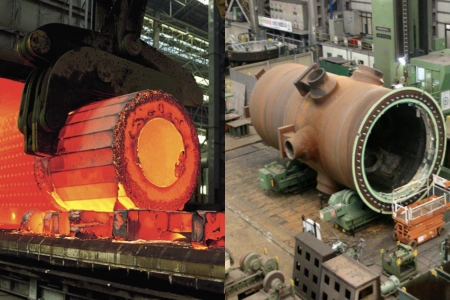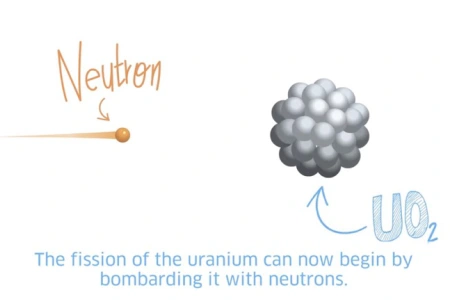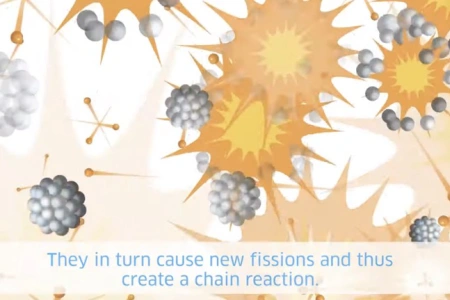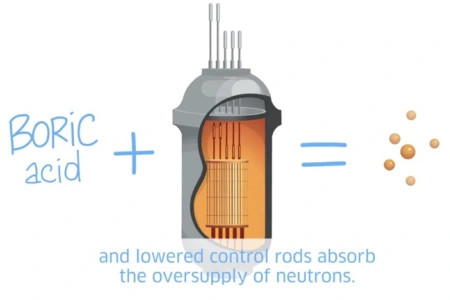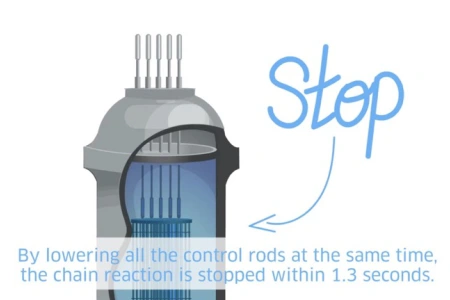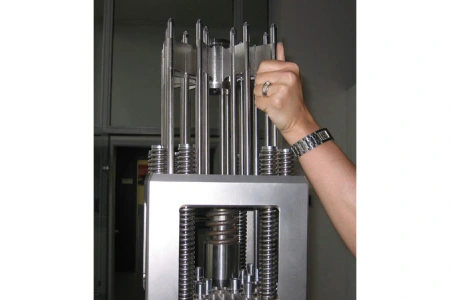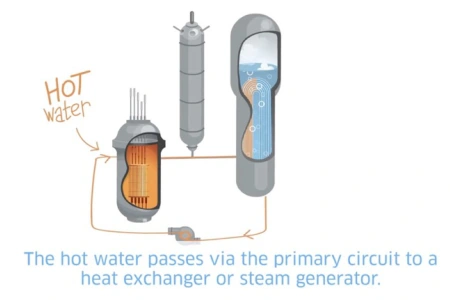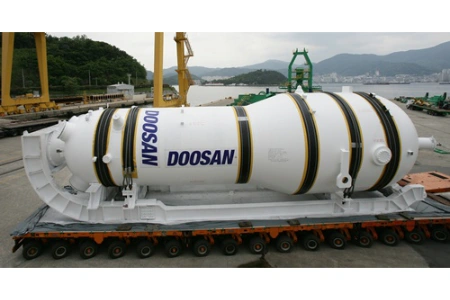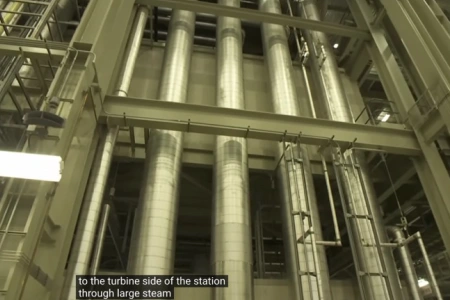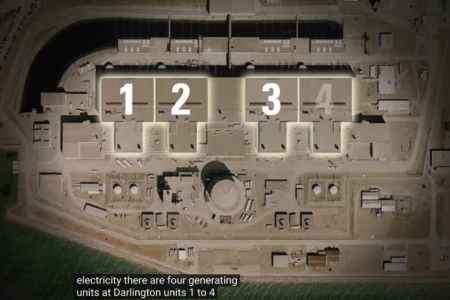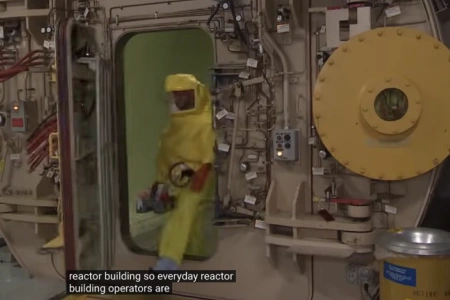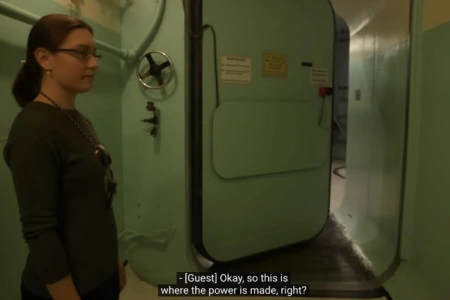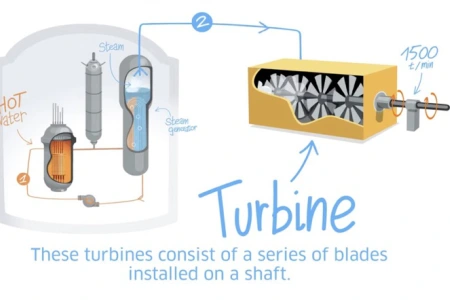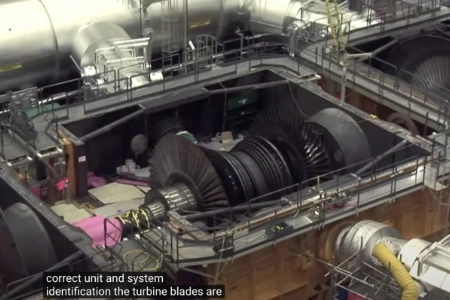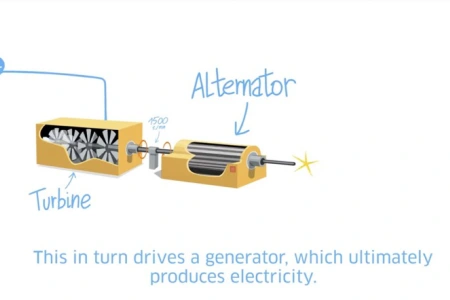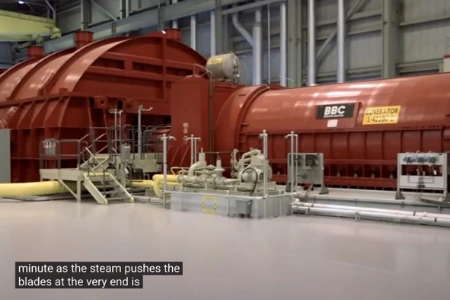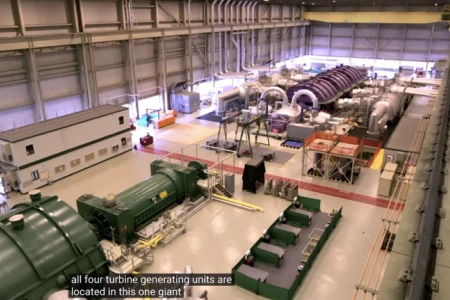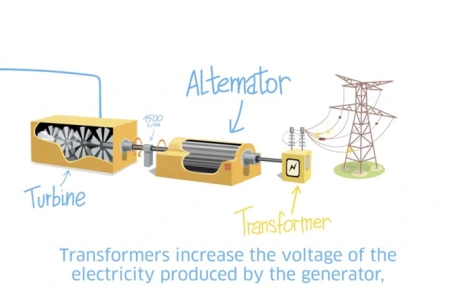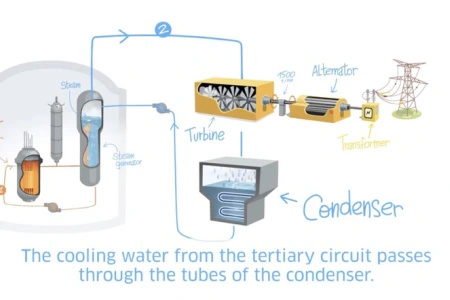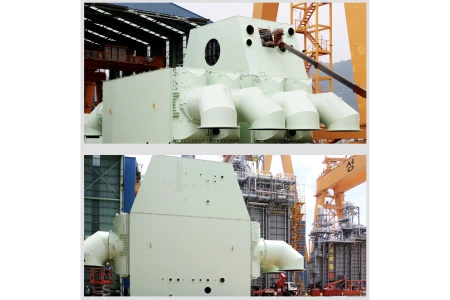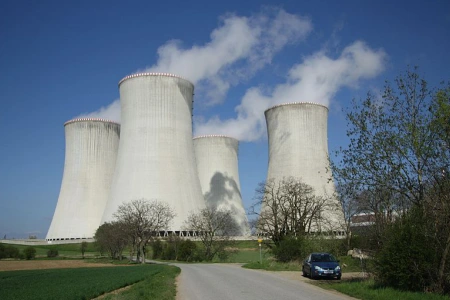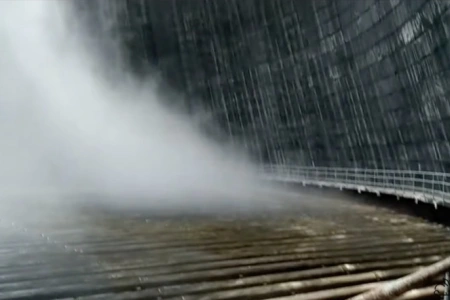This post primarily aims to quench my curiosities in the fastest way. Heavily reliant on my judgement and intuition.
Written from scratch by Meston Ecoa
SEE NUCLEAR PLANT
COMPONENTS IN REAL LIFE

Introduction
Investigating an industry is difficult. Researching in front of a laptop, on a desk, analyzing simplified images like below adds to the complexity. I THINK THE QUICKEST WAY IS TO ACTUALY SEE THE COMPONENTS MYSELF. I don’t want to imagine the components. I want to see what they look like, how big they are, how they work with each other etc. FOR EACH ANIMATED COMPONENT, I WILL TRY TO FIND THE REAL LIFE COUNTERPART. Image like below is good at explaining the concept, but it doesn’t get the FEEL across.
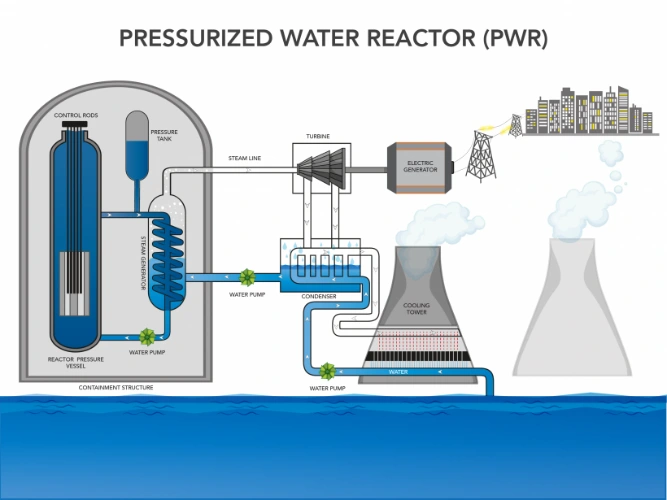
Source: US DOE
Q. What does the real life components of
a nuclear power plant look like?
Fuel Pellet, Fuel Rod
Ceramic UO2 (Uranium Oxide) fuel pellets are about the size of fingertips. Baking the pellet removes pores and increases density of uranium-235. Stacks of pellets are slid into a fuel rod. I find that specifics vary. USNRC sites 3/8-inch(1cm) in diameter and 5/8-inch(1.6cm) in length. Sciencedirect states standard diameter to be 1cm or less. Boiling water reactor (BWR) uses a taller one than pressurized water reactor (PWR), both being less than 2cm.
I will continue in this format. The leftmost image being an illustrated one, and the subsequent visuals from real-life.
Fuel Bundle (Fuel Assembly, Fuel Element)
USNRC says fuel rods are about 4 meters and 200 are combined for a PWR fuel assembly (see below), and 80-100 rods for BWR. Energy Encyclopedia says fuel rods are 4-5m and contain 350-400 pellets. Around 179-264 rods for an assembly. The fuel assembly in the third photo seems to meet these specifications quite well. In the CamecoCorporation Youtube video, they say 30 pellets are slid into one rod, and 37 rods are combined into an assembly. Again, specs could vary.
Reactor Vessel
In the Darlington Power Plant video the calandria (vessel) contains 480 fuel channels and 6,280 fuel bundle. That must mean there are 13 fuel assemblies for each channel and we are only seeing the bottommost fuel assembly. I counted the channels though, it’s 402 channels. I wonder where the other 78 are. Science Encyclopedia states that a Calandria vessel is a “cylindrical vessel (diameter = 6.9 m, height = 5.3 m) housing the 513 lattice tubes, which are surrounded by the heavy water moderator”. In the MIT video, they referred to the blue construct as “reactor tub“. Inside was fuel and fission was happening, but very little in scale compared to Darlington Power Plant. MIT facility was not for power generation, but for researching radioactivity, nuclear, fission, getting neutron for the neutron beam experiment. The reactor tub is a heavy dense concrete shielding that is 5 and half feet tall. I don’t think this could count as a vessel, but it was interesting to see that scientists were directly above the reactor looking down at the fuel through the water. They say 10 feet of water is enough to absorb all the radiation happening in the fission process. “Water is really good at absorbing neutrons.”
The fourth photo is Shippingport nuclear vessel, the first vessel to be used commercially. Fifth photo from Doosan Enerbility forging their reactor vessel products. Commercial vessels are huge, but small scale fission can be done harmlessly and controllably in a lab setting.
Chain reaction
This is Oppenheimer stuff – you know, from the movie. A neutron would hit uranium and a chain effect would occur. The Engie video says after each fission, only one neutron should cause a new fission. Around 2.5 neutrons would get emitted per each uranium-235 fission. That makes sense, since anything more than the power of one would escalate exponentially. From further research, boric acid (boron) coolant would only be used for a PWR reactor. BWR would not.
Control Rod
Control rods can be inserted into the reactor core to reduce the reaction rate. By lowering all the rods at the same time the chain reaction is stopped within 1.3 seconds. They are made using elements like hafnium and boron that can absorb neutrons without decaying themselves.
Steam Generator
In Darlington Power Plant there are 4 steam generators per reactor that are 7 stories tall, each containing 5,000 U shaped tubes. The second photo is Doosan Enerbility’s steam generator product. IT does seem multiple-story tall. The steam lines in the third photo carries the steam over to the area where the generator is located.
Plant Units and Airlock System
In the first photo, each of the four units looks like a rectangle on top of a square. The square area has the nuclear reactor and the rectangle area would have the turbine generators for the electricity generation. The exterior of the reactor building is heavily reinforced concrete that is 2m thick. Steam would get carried over using steam pipes. When the reactor is down and personnel have to enter the reactor unit, they would bypass a airlock system like the second and third photos. Upon returning from the reactor chamber, they would perform a quick radioactivity check on their bodies.
Steam Turbine
Steam comes through the middle of the turbine and get split into two sides, spinning the shaft. The gargantuan shaft would rotate 1,800 times a minute.
Generator
The shaft is connected to the generator, which is a huge electro-magnet.
Transformer & Grid
Electricity passes through the transformer to increase the voltage so there is less energy loss. From there the electricity enters the grid and into homes.
Condenser
The steam is passed through a condenser to be turned back into a liquid. The second photo is one made by SNT Energy. They are huge.
Cooling Tower
Not the water that’s turned into steam, but the water used to cool the steam is cooled through a cooling tower. Usually leveraging a river source. There are three distinct water systems– the reactor coolant, the steam, the water to cool the steam. The third photo is the inside of a cooling tower. So the big chimneys in Springfield where the Simpsons live was in fact quite a peripheral component.
Conclusion
Q. What does the real life components of a nuclear power plant look like?
This was a good exercise. Now I feel comfortable looking into even more technical details
Written from scratch by Meston Ecoa
May contain incorrect data and information

